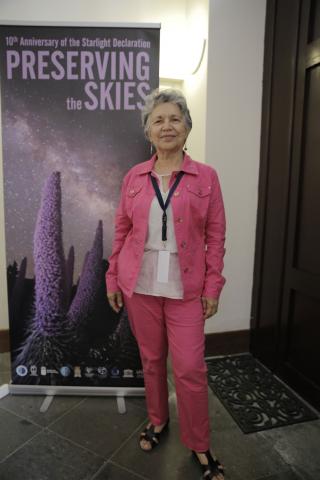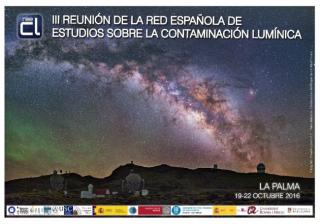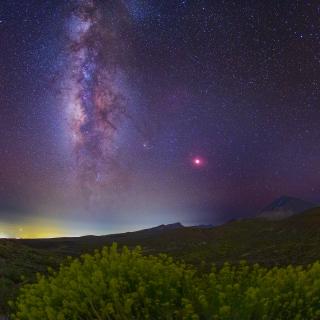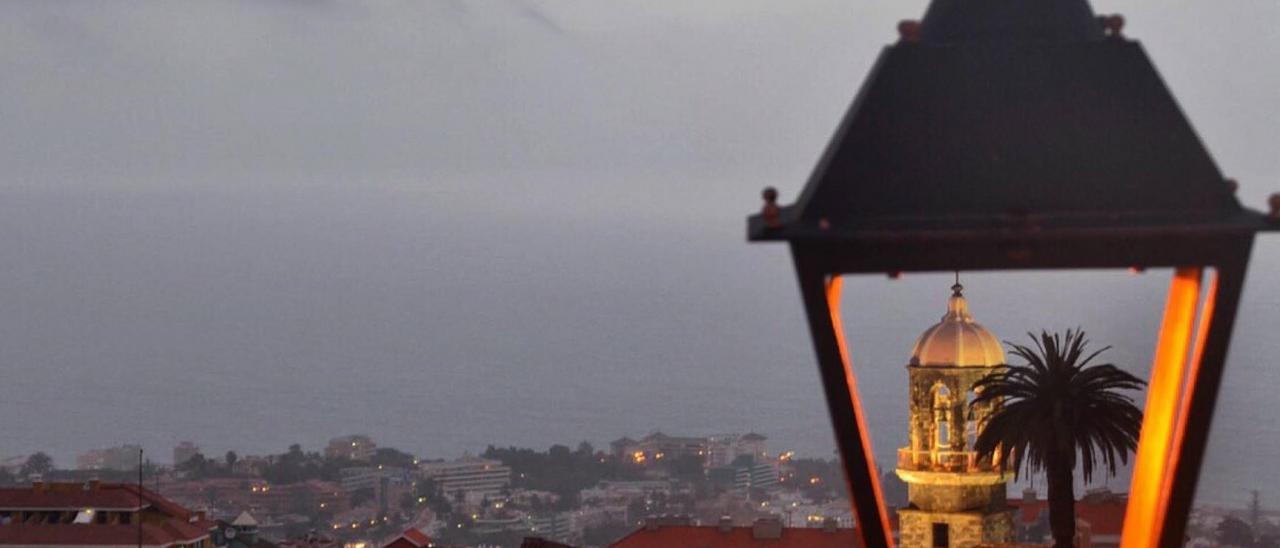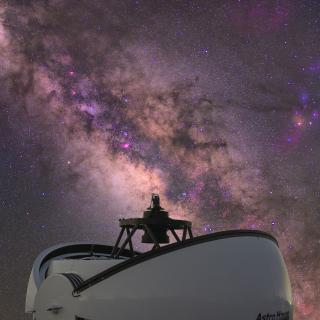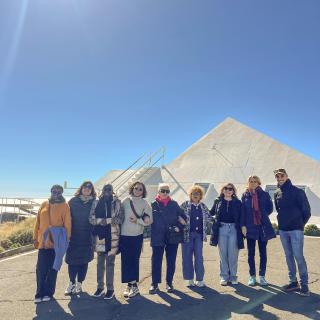The Technical Office for the Protection of Sky Quality (OTPC, its Spanish initials) has become a model copied by other Spanish autonomous regional communities such as Catalonia, the Balearics, Analusía, Navarre, Cantabria, Castille & Leon, and Extremadura. It has also been a reference for other places in the world, such as Chile, Hawaii, and Italy.
When night falls, we often think, mistakenly, that the more artificial lighting we have the better. There is more security, a greater sense of tranquility for people in general, and the important buildings are best presented. But this insistence on illumination deprives us of the possibility, among other things, of seeing the wonder of the night sky, which UNESCO has declared a heritage for future generations.
For the IAC it is crucial to protect the night sky. This is the only way to maintain the quality of our research, by protecting the astronomical quality of its observatories. On October 31st 1988 the Spanish Parliament passed the Law of the Protection of the Astronomical Quality of the Observatories of the IAC.
The Astronomical Observatories are guarantors of the protection of the environment. They are sited in privileged areas, which they care and protect in order to study the Universe. The sky is their resource and protecting them is essential to carry out their mission to observe galaxies, stars, and planets.
Since the entry in force of the Law of the Sky, 34 years ago, and in particular since 1992 when its Regulations were approved (RD 243/92) and the Technical Office was started, important funding has been spent on lighting, light sources and renewing obsolete cabling systems, and lighting connecors in poor state. Using these measures, up to the year 2012 a saving in electricity consumption of some30% was achieved. This percentage has been increasing thanks to the introduction of LED technolgy and a revision of the Regulations which took place in 2017, bringing the saving to 80% compared to the lighting originally installed.
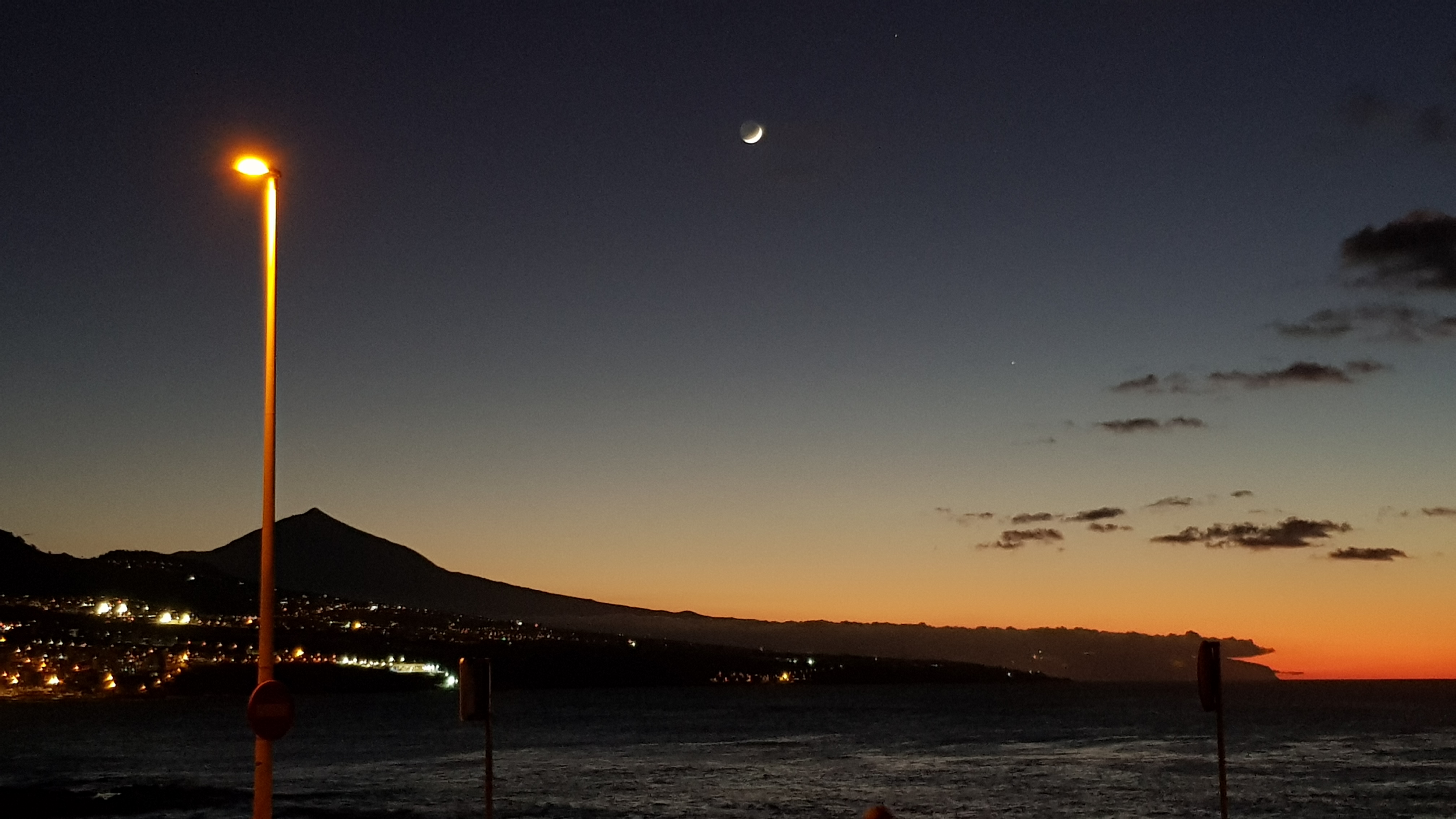
In addition, the Canary Law of the Sky has been a seed from which other ideas and similar projects have grown in other Autonomous Communities. Among these initiatives we should pick out “Starlight” and international declaration in defence of the quality of the night sky and of Humanity’s right to enjoy viewing the Universe, with which the OTPC has collaborated very closely. Furthermore, in regions such as Catalonia, the Balearics, Andalusía, Navarre, Cantabria, Castille & Leon, and Extremadura, similar regulations have been approved to fight against light pollution.
From its initial concept, the Law of the Sky protects the observatories in four ways, but basically against light pollution. This has been the primary factor within the Law. It protects the Roque de los Muchachos Observatory,it but also involves the area of Tenerife with a direct line of sight to La Palma. In La Palma itself it has had retroactive application, which has brought about the adaptation of many outdoor lighting installations since 1992. These adaptations have led to the reduction of potential light pollution to one half ot its original levle, and also a significant reduction in the cost of electricity for the municipalities concerned, a tendency which has incrased since the introduction of LED technology.
In order to apply the law correctly it was necessary to collaborate with diffeent manufacturers of lighting, so that the equipment for street lighting was satisfactory. To do this a large quantity of lights were tested and certified, in order to facilitate the work of the engineers and designers in charge of the projects of outside lighting in keeping with the law. At the present time certificates have been issued foro ver 600 different types of lights from 65 different manufacturers.
To control light pollution the Law stipulates that any new outdoor lighting system must be accompanied by a previous obligatory technical report from the IAC so that any new installation must satisfy the regulations. To do this it has been necessary to collaborate with the Department of Industry of the Government of the Canaries. Until now some 4000 technical reports on lighting systems have been issued. But not all the new installations have passed this IAC certification process, either because they simply do not satisfy the law, or because they are modifications of existing systems, or for other reasons, so that since 1994 any installation which does not satisfy the regulations is denounced. Up till now over 1800 denunciations have been made, of which 1100 have been resolved, as a result of 6000 inspections.
In order to monitor the existing levels of light pollution at the IAC observatories, a system of measurements was planned. Until now 280 hours of these observations have been made at the Teide Observatory (OT) and 360 hours at the Roque de los Muchachos Observatory (ORM) .At the present time three ”ASTMON” instruments to measure automatically the sky background emission are installed at the OT and the ORM Each instrument records the sky brightness data every 17 minutes through the V,R,B, and U filters on nights with no moonlight, and indicates whether the night is photometric at each measurrement.
One of the main lines of attention since the passing of the Law has been publicizing it, and obtaining the collaboration of differnt bodies and organisms,which have undoubtedly improved its development. This attention has meant that since the inception of the Law there have been collaborations with all the municipalities affected by it, and with the associations of manufacturers of lighting, as well as with Committees on lighting both national and international, the Cabildos of Tenerife and La Palma, with other autonomous communities, astronomical groups, and with ecological organizations or those which protect the environment such as Greenpeac, Seo Birdlife, and a more recent collaboration with LIFE Natur@night, an alliance of the Islands of Macaronesia for the reduction of light pollution.
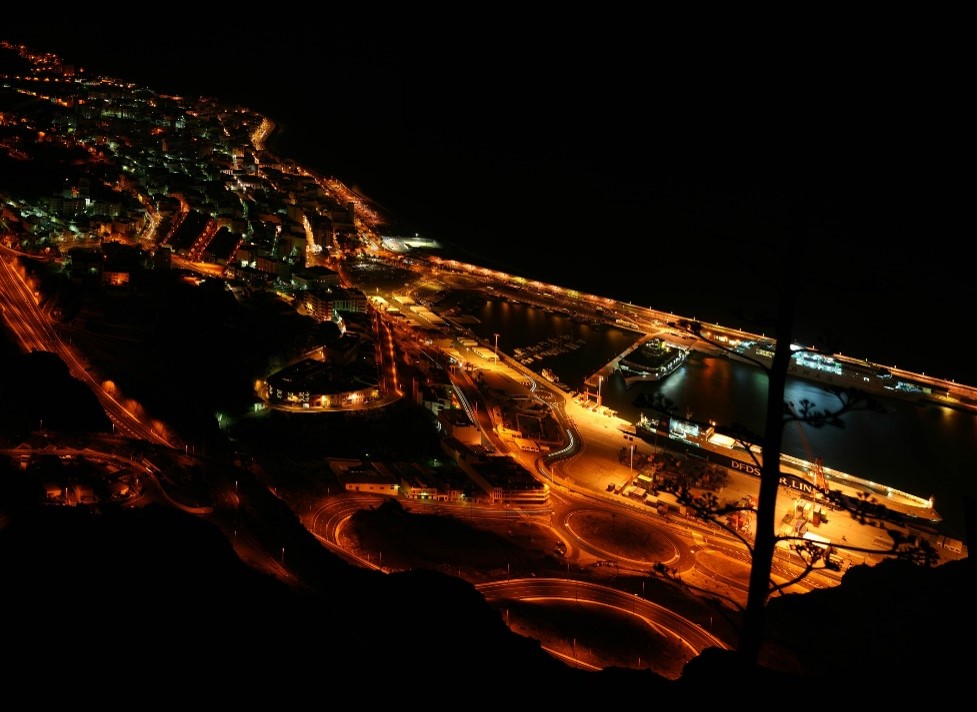
Another aspect subject to the Law is that of radioelectric contamination which, although less difficult to handle has been just as important.To monitor radioelectric contamination an agreement has been reached with the General Secretariat of Telecommunications to make periodic measurements of the radiofrequency background at both observatories. In addition the OTPC has portable equipment for periodic monitoring in order to detect frequencies above the levels espablished by the Law.
One of the principal achievements of the IAC in the field of protection of the observatories was obtained on May 17th 1998 when the airspace above the telescopes was declared an “Ecological Protection Zone”. This means that both the Teide Observatory and the Roque de los Muchachos Observatory are free from air traffic.
Finally, with reference to atmospheric contamination, the Law limits the installation of industries or contaminating activities above a level of 1500 metres above sea level. Although this seemed to be controversial at first, it has been easy because of the absence of potentially contaminating industry on the islands of Tenerife and La Palma, and also the protected levels contain zones which are officially protected areas (National Parks, High Forests etc.).
More than thirty years have passed since the initiation of the Technical Office for Protection of the Sky at the IAC, and the advances and achievements are well known. But there are still obstacles to resolve, such as the continuation of the protection of the observatories from light pollution, adapting the light sources whhich for some reason are not compliant with the Law, and making the people conscious of the environmental benefts of reducing it, and the negative effects of no doing so.
The IAC originated a new way to understand outdoor lighting which has spread, not only nationally but throughout the world. Adequate lighting means intelligent lighting, accomplishing the objectives of security for citizens, saving energy, reducing environmental impact, and keeping clear skies. It is also important to note that these clear skies are a resource not only for the scientific community, but patrimony for humanity and the most extensive landscape we can possibly admire.
More information:
fundacionstarlight.org//
The Technical Office for the Protection of Sky Quality (OTPC)
Correo electrónico: otpc [at] iac.es (otpc[at]iac[dot]es))
Teléfono.: 922 605365
